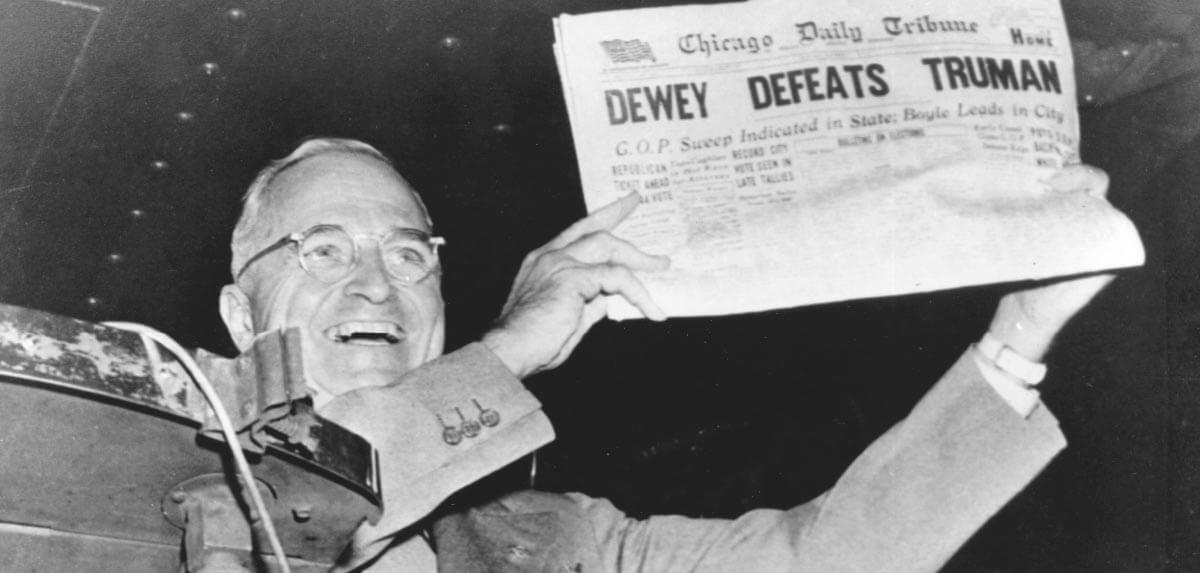Why are polls are so unreliable???
Is it bias? Conspiracy? Poor methods?
Well, it& #39;s complicated. But I& #39;ll try to explain.
(1/17)
Is it bias? Conspiracy? Poor methods?
Well, it& #39;s complicated. But I& #39;ll try to explain.
(1/17)
#Polling has drastically evolved. The dawn of modern election Polling began in 1936 after #Gallup successfully predicting Roosevelt would win. The polling of that era consisted of in-person interviews conducted by a professional interviewer to minimize nonresponse bias. (2/17)
Each interviewer was given a highly detailed set of sampling quotas to meet. The quota sampling was nothing more than a systematic effort to force the poll sample to fit a national profile. (3/17)
The sample size was designed to have so many women, so many men, so many blacks, so many whites, etc. Each category& #39;s responses were taken to represent the same proportions in the sample as in the electorate. (4/17)
The basic idea of quota sampling seemed like a good one. Force the sample to be a representative cross-section of the population by having each important characteristic of the population. (5/17)
In 1948, Gallup conducted a poll with a sample size of about 3,250 people, a broad cross-section by today& #39;s standards. The poll showed Dewey beating Truman 50% to 44% (6% for 3rd parties). But Gallup botched it. Truman won reelection. What happened? (6/17)
The polling method didn& #39;t change much after 1948. Pollsters still relied on in-person interviews, but pollsters focused on obtaining a better cross-section. (7/17)
In 1980, large media outlets quietly entered into the election polling. The polls showed either Carter ahead or Reagan with a slight lead. But Reagan easily trounced Carter by near-landslide proportions that no survey predicted. (8/17)
In the 1990s, pollsters began using landline phones, and by 1999 began experimenting with internet surveys. In 2000, Gallup& #39;s daily tracking poll swung wildly. The polls showed a tight race but pointed to Bush w/ the popular vote edge. Wrong. Exit polls showed Gore. Wrong. (9/17)
Telephone polling had the advantage of providing randomization to the process, but the fundamentals problem persisted. (10/17)
Of course, by the mid-2000s, landline phones began to decline, and so did response rates. Polling didn& #39;t improve; see the 2012 polls predictions. In fact, it got harder as phone response rates dropped. (11/17)
Fast forward to 2016; it wasn& #39;t supposed to happen. None of the poll-based prediction models anticipated the slipt result. Why? (12/17)
The polls set an election narrative that the news media embraced, hook, line, and sinker. Pollsters failed to obtain a representative sample of the electorate, and they were unable to see that voting preference in one state could be correlated in another state. (13/17)
The flaws of polling have not changed since 1936. Pollsters must make a variety of design decisions—about the mode, timing, sampling method, representation, question formulation, weighting, etc. Each of these decisions can potentially bias the results in major ways. (14/17)
Polling today is an art rather than a science, and many of the pollsters are bad at their art. The biggest issue in 2020 is obtaining a fair cross-section. When a pollster calls a voter in X, the pollster has to make sure that the voter accurately reflects voters in X. (15/17)
This requires pollsters have a strong working-knowledge of demographics in each state. For example, if the pollster takes to the one high school drama teacher in town, and none of the 100 oil field workers, the poll will likely not be representative of the vote. (16/17)
Morden polling is tough and costly, but groups like, but groups @trafalgar_group, @Peoples_Pundit @Rasmussen_Poll do a good job overall. (17/17)
What’s your vote? Do you trust the election polls?
#Election2020 https://abs.twimg.com/hashflags... draggable="false" alt="">
https://abs.twimg.com/hashflags... draggable="false" alt="">
#Election2020

 Read on Twitter
Read on Twitter


